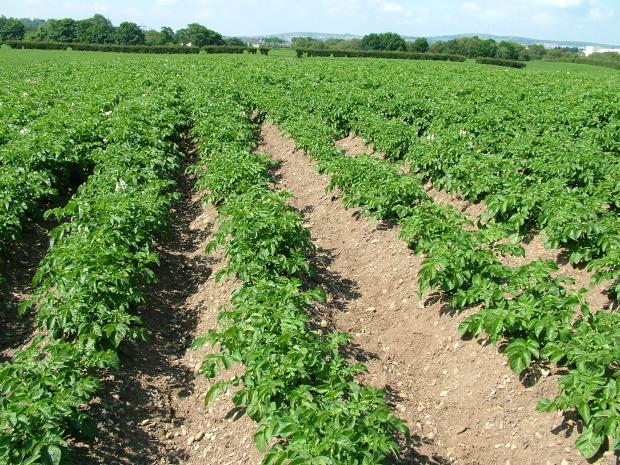Potato plant health
Areas of Expertise:
Grassland and Plant Science
Service:
Specialist Advice
Northern Ireland has an enviable reputation for the production of both seed and ware potatoes to the highest of health standards. This production is underpinned by scientific research, diagnosis and advice provided by AFBI, in partnership with the Department of Agriculture, Environment and Rural Affairs (DAERA) Agri-food Inspection Branch (AfIB) and the College of Agriculture, Food and Rural Enterprise (CAFRE).
Diagnostic and advisory services
Guidance can be obtained through AFBI and/or CAFRE. The Agri-Food and Biosciences Institute provides a wide range of diagnostic and advisory services to commercial potato producers:
- Pest and disease diagnosis
- Early detection and risk assessments
- Advice and guidance on pest and disease management
- Susceptibility / resistance evaluation of potato clones
Pest advisory services

- Nematodes (eelworms)
Potato cyst nematode (PCN). To detect PCN in land intended for ware production. Submitted soil samples are processed to determine PCN species and viability level. - Root knot nematodes (RKN) (Meloidogyne spp.)
RKN crop damage has been increasing, partly due to the reduction in use of pesticides, and as a response to climate change. RKNs attack several arable crops, including potatoes, and certain species have now been shown to cause severe yield losses in mainland Europe. - Virus vector nematodes
The free-living Trichodorid nematodes transmit tobacco rattle virus (TRV), which leads to ‘spraing’ in potato tubers. These are more likely to be prevalent in well-draining soil.
Insects and other pests
- Wireworms are the larvae of certain click beetles that attack potato crops, rendering them unmarketable and providing ingress to other soil organisms. They are abundant in grassland and frequently invade potato crops in the initial years following ploughing.
- Cutworms Caterpillars of a number of noctuid moths may attack potato crops tunnelling the tubers and severing stems and roots at ground level. These attacks are more common in hot, dry summers and on light soils.
- Slug damage to potato tubers is most serious in wet autumns following mild, wet summers and particularly when harvesting is delayed. Crops grown on heavier soils are most at risk.
- Aphids cause yield losses by direct feeding and virus transmission. Four aphid species are common to growing potato crops, and additional species may infest the sprouts of seed potatoes within the potato store or chitting house. (Potato Aphid Monitoring pages)